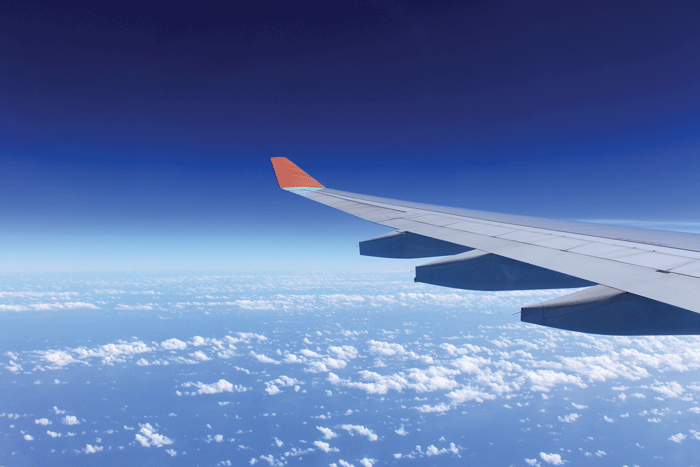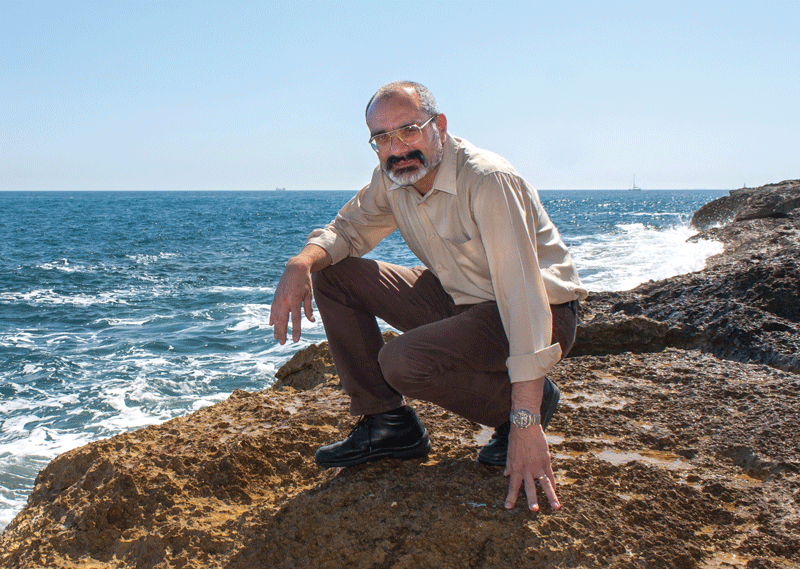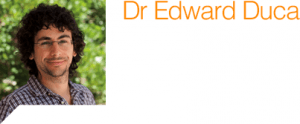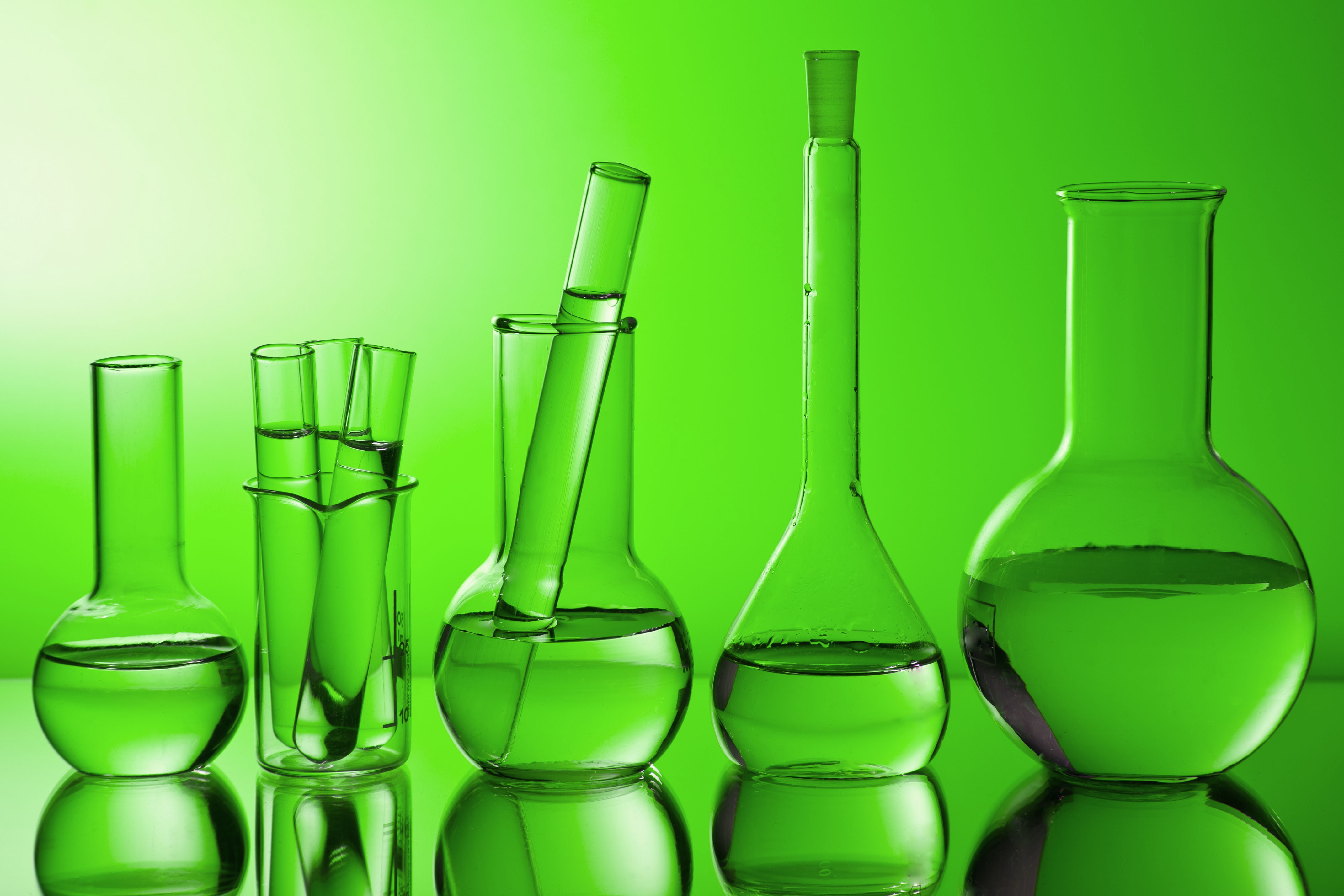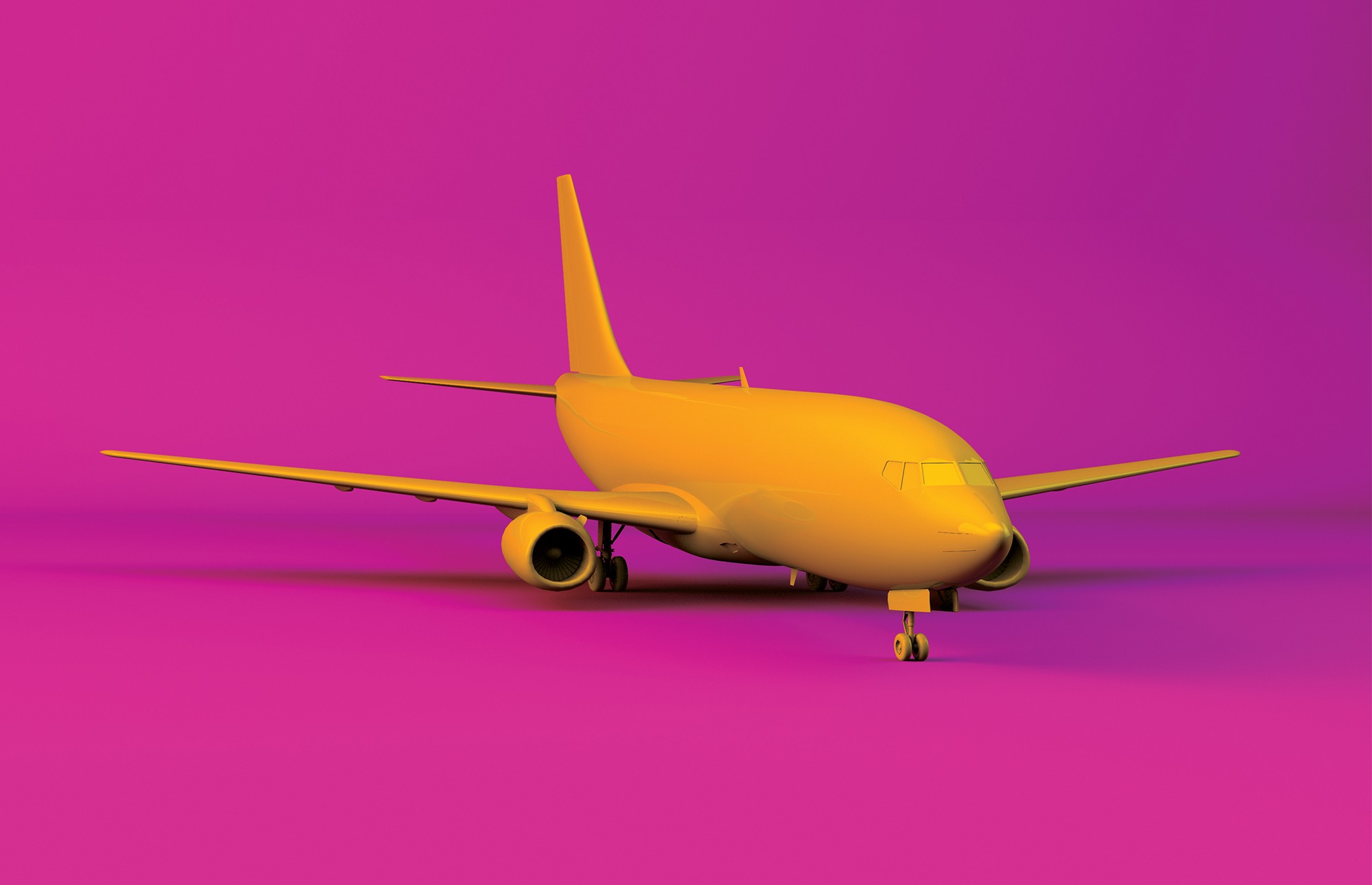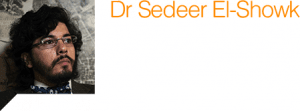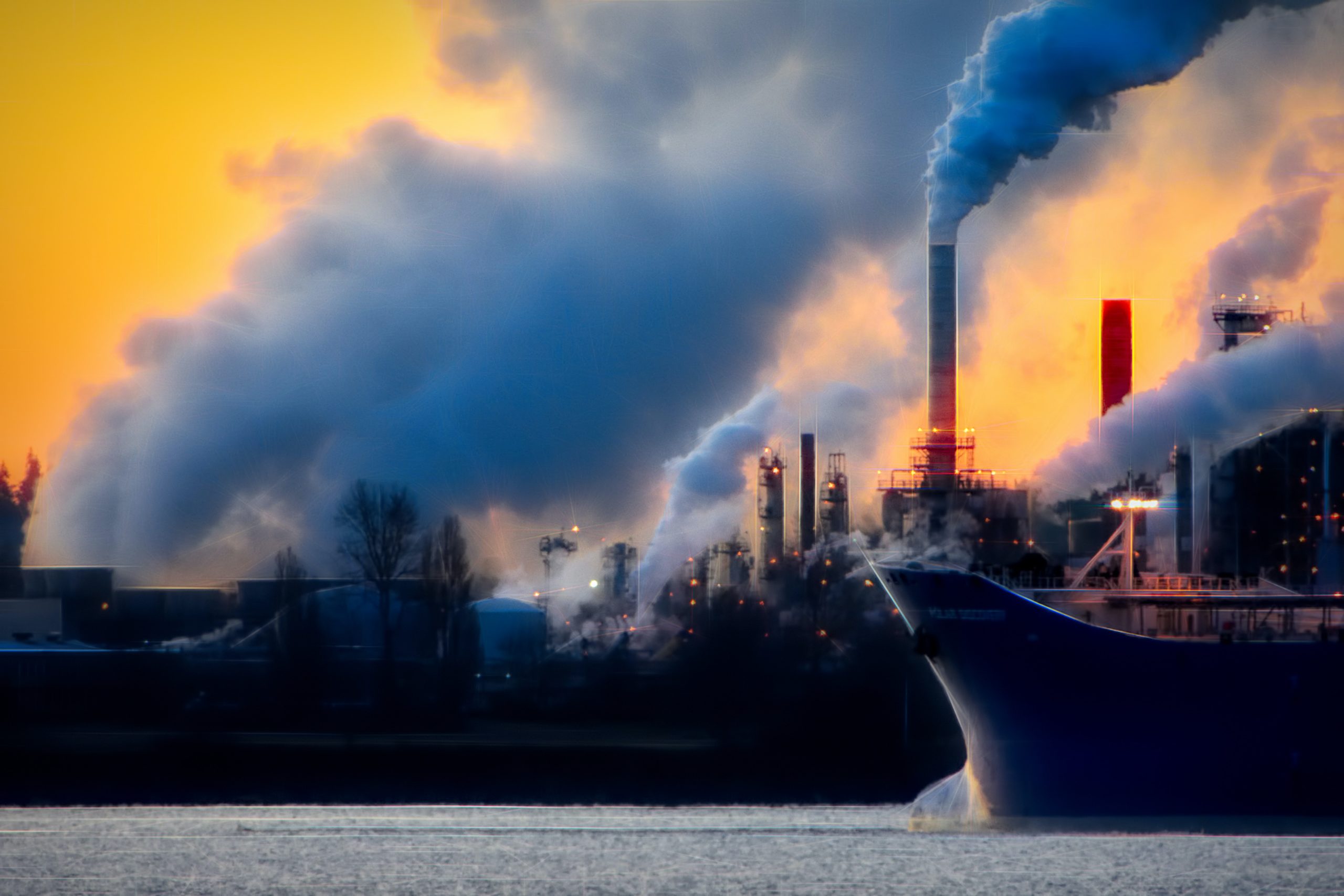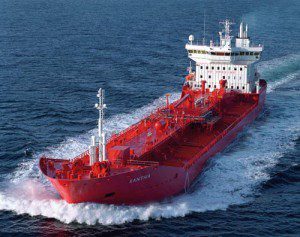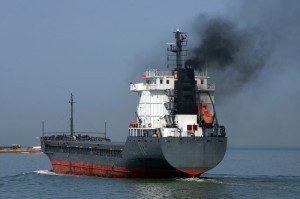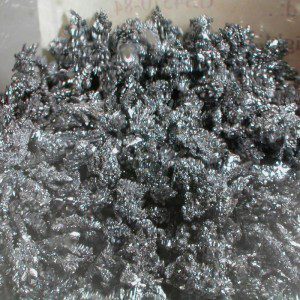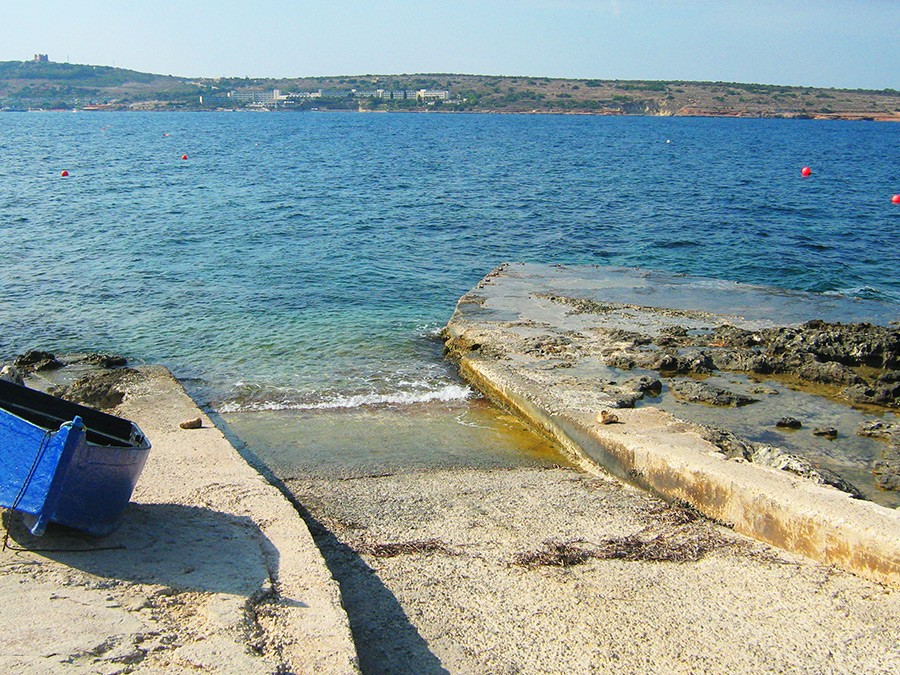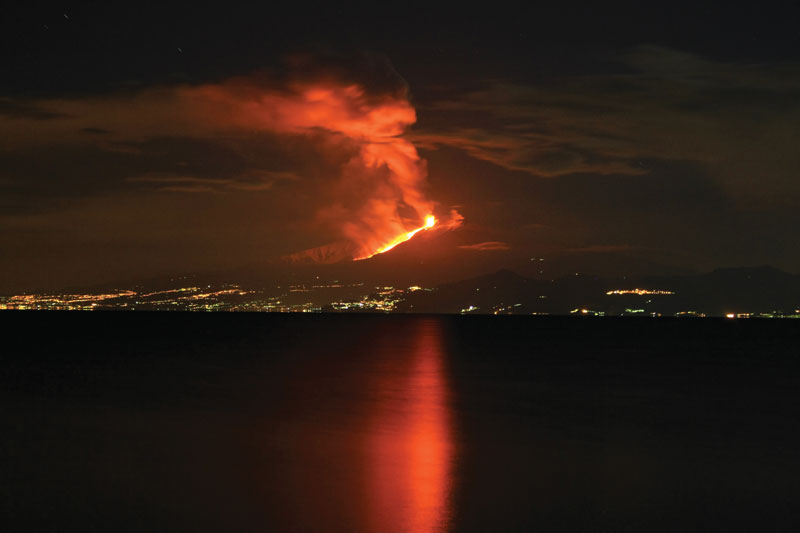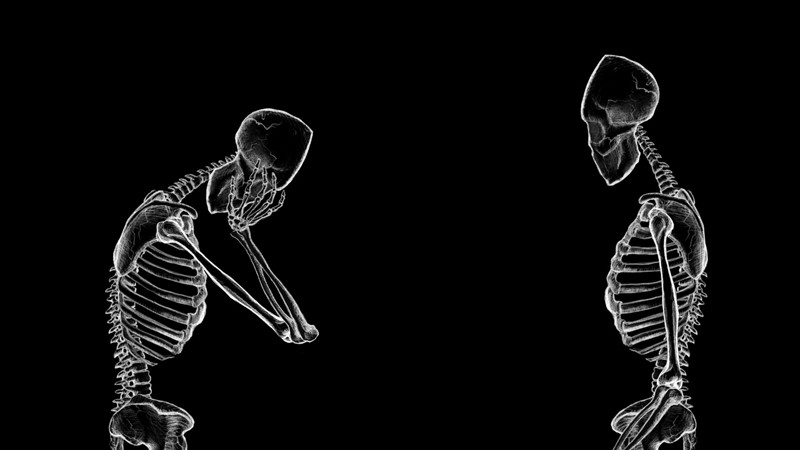A life studying life
Prof. Patrick J. Schembri lives for biology. His long career has brought him in touch with an endless list of creatures that includes fish, beautiful white coral, sharks, limpets, crabs, and ancient snails. Edward Duca met up with Schembri to find out more about the life around Malta.
I was nervous. I still remembered fumbling for excuses for handing in my assignment a few days late. Prof. Patrick J. Schembri’s stern gaze does not take excuses. This time I entered his office to learn about the wealth of research under this man’s belt. With over 150 refereed papers to his name I knew I would not leave disappointed.
In 1982 Schembri returned to Malta after a doctorate at the University of Glasgow and a post-doctorate in New Zealand.
‘In Scotland, I was working on animals that came from a depth of 40m and in New Zealand with animals that came from the whole span of the continental shelf and upper continental slope at depths down to about 900m. For that you need a research vessel, crew, collecting equipment, and so on. I came to Malta and there was nothing’, said Schembri. This did not stop him, like the animals he studies, he just adapted.
‘Nobody has looked at the ecology of shores in Malta before, so I decided to do that.’ And as simple as that, Schembri went from studying deep water animals to the near shore. The techniques and equipment needed are completely different — a diverse research background that must have helped him in his long career. After many years, Schembri returned to studying life in deep waters, invasive species, and many other things, but more on that later.
Back in the 80s the Internet simply did not exist locally so Schembri’s biggest problem was not equipment but sourcing academic journals. Every scientist needs to constantly read journals to keep up to date with the latest findings. It is essential for research inspiration, to see knowledge gaps that can be studied, to learn new techniques and knowledge, and to avoid repeating others’ research. Schembri, ever determined, went to great lengths to get the information he needed in order to research and publish.
‘Thanks to my mentors I was brought up with a culture of publishing.’ The renown of every scientist depends on the importance of the journals they publish in and how much they publish. Neither was a problem for Schembri. ‘I produced my first paper before I did my A levels. In the early 1970s, I improvised some apparatus to do experiments on something that you would [normally] need sophisticated equipment for, so rather than using a nitrogen chamber, I used a plastic bag to which I attached kitchen gloves, and it worked.’ After some encouragement from his tutor the paper was written as a note that was published in School Science Review. He also published around six papers from his Master’s degree. No small feat, I have not achieved this even after a Master’s degree and a Doctorate.
A Master of all Trades
The breath of his studies is stunning. With his students, Schembri has studied animals which have invaded Maltese waters. These include the nimble spray crab (Percnon gibbesi) and the non-indigenous Red Sea mussel (Brachidontes pharaonis), which, unlike all native mussels is forming mussel beds with thousands of individuals. He has studied the seabed’s ecosystems that happen to be vital to maintain fish stocks. He has even delved into Malta’s ecological past analysing samples from cores drilled in Malta’s coastal sediments studying sub-fossil molluscs to piece together the Island’s early history. These were only possible through collaboration with many scientists and a vast army of students.
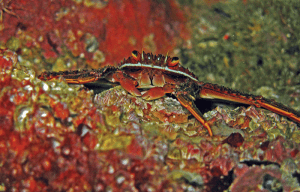
Percnon gibbesi
Photo by divemecressi, flickr
His collaborations have been essential. Schembri was contacted by Italian researcher Dr Marco Taviani to survey Malta’s deep seas. Taviani has access to the multi-million research vessel Urania. The 61.3m ship has on-board laboratories for geological, chemical, radiological, geophysical, and biological research. To make it in Malta, ‘if you don’t have enough resources you have to improvise and collaborate, especially with overseas researchers who do have the resources. And it worked’.
Schembri has gone further than just making it work. He has flourished. His strategy involves participating in EU funded projects (to bring in the money) while keeping very ambitious long-term projects running in the background on a shoestring. The only problem is that for ‘all the EU projects, the agenda is set internationally. While [for local projects] the funds are minimal, I get a few hundreds a year. But I am free to study what is interesting and important for Malta.’
Managing Fish
BENESPEFISH is one of his locally funded projects. ‘I want to find out what kind of habitats we (Malta) have and how fish interact with them.’ By studying what fish eat and where that food grows, by seeing the nursery grounds and spawning areas of the fish, by researching how the impact of fishing techniques affects the sea floor that ends up damaging the ecosystem. For example, in collaboration with the Government’s Fisheries Agency, students under Schembri’s supervision studied the effect of a type of fishing technique called otter trawling. They discovered that it can adversely change the benthic (seabed) ecosystem and that the trawling should be done in corridors, with spaces between them to allow the recuperation of the seabed, and therefore the dependent fish stocks. This will help fish stocks recuperate and fishermen to retain their livelihood.
“For some strange reason, beforehand fish were one thing and the rest of the sea was something else”
The above is called the ecosystem approach to fisheries management. Back in the early 2000s ‘Matthew Camilleri from the Fisheries and Aquacultures Department got involved in a FAO (Food and Agriculture Organisation) project called MEDSUDMED,’ that was pushing for this approach. ‘So he asked if I could help out with the ecological aspect. […] Ecologists entered the picture because in this approach fish started being looked at as part of the ecosystem. For some strange reason, previously fish were one thing and the rest of the sea was something else’ — a clear reason for fisheries scientists and marine biologists to work together to be able to give the right scientific advice to the Government.
The BENESPEFISH project hinges on a healthy relationship with the Government. The Government Fisheries Agency commissions the MEDITS trawl survey to monitor the health of fish stocks, which are mandatory for all EU member states that border the Mediterranean. These surveys need to ‘follow a strict protocol’, perfect for science. However, the survey ‘is limited to about 40 species. They still get everything else such as benthic organisms [that live on the sea bed] that they used to just throw overboard. So I said to them, okay why don’t you keep it, give it to me, I work on it, then I give you the results. […] If I had to hire a fishing trawler and go out myself for 14 days it would cost me around €190,000, crews and everything. Instead, by collaborating, we get this data at a low cost. All I need to pay for is for insurance, fixatives, sample containers, and a research assistant to collect the samples. So that’s what the University funds, it funds the research assistant and materials. […] So you [the Government] get information which you would not normally get because you are not a research institution.’ Clever and it worked.
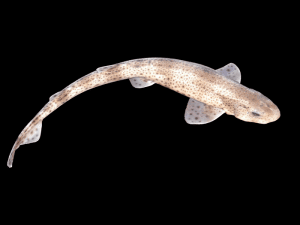
These discards are valuable to find out about the ecology of the fish in our seas. ‘They were going to get rid of a few hundred sharks (the small-spotted catshark, Scyliorhinus canicula) […], so I got them and one of my students analysed their stomach contents which told us a great deal about what the fish feed on and also where they feed. […] They feed on fish but also on the benthos, the bottom material.’ From 532 stomachs sampled, over half were eating teleosts (a group of bony fishes) and nearly one fifth were eating crustaceans, with even some cannibalism. Male and female catsharks had different diets. To keep catshark populations healthy these food sources need to be maintained. The seabed is vital.
These MEDITS surveys have led to some surprising discoveries. During a survey one of Schembri’s students picked up a piece of white coral which she brought back to be identified in the lab. It turned out to be the deep water coral Lophelia pertusa that builds reefs. Schembri still had this piece and showed it to me. As I picked up this brilliant white coral he told me, ‘this is just a piece of a much larger structure. You can see the remains of some the individual animals [it is a colonial species made of many individuals], the cup-like structures with grooves.’ It is such a different species — out of this world. Schembri and his group reported finding this coral around Malta that attracted Marco Taviani (Institute of Marine Sciences, National Research Council of Italy), who was a colleague of Schembri, to organise a research cruise. Using the Italian research vessel the Urania they explored Maltese deep waters. This was the first of three such cruises that Schembri’s research group were invited to participate in. During one of these cruises they found other species of corals including the endangered red coral (Corallium rubrum), exploited since antiquity to make jewellery. They saw it at depths never seen before, around 600–800m, which is two to three times deeper than previously. When studied, this deep water population was found to be genetically isolated from others, probably because the different populations were not breeding amongst each other.
Malta’s Coast
When Schembri first came back to Malta he started working on its shores. But our coasts are not just beaches and cliffs. ‘Inland the coastal area extends as far as sea spray carries, since this renders the soil saline and therefore only adapted plants can thrive. […] Offshore, the coastal area extends to depths of 150–200m as material from the land, like sediment, still finds its way to the seabed even at those depths.’ That is a huge area for a researcher to cover, but Schembri wants to record all its habitats, obviously with a lot of help.
Enter the project Faunistics and Ecology of the Maltese Islands (FEMI), ‘the aim is to have an inventory of what we’ve got. […] I want to understand what habitats we have and which species live there.’ To cope with such a massive project, Schembri splits it up into bite-size research questions that his students can tackle over a few months (or longer if it is a Master’s or a Doctorate project). ‘The results of each small project contribute to the whole. […] By now I would say that over the years the number of people who have contributed to the project must be at least a hundred, although it is usually around six at any one time.’ Many of these student projects lead to research publications coming out from the University of Malta’s Department of Biology.
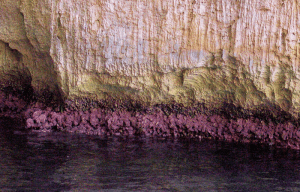
One of the most important things for the FEMI project is to figure out the state of our current environment. By knowing how things are we can tell how they are altered by future change. Back in 1998 Schembri, Dr Mark Dimech and Dr Joseph A. Borg studied how fish farms in St Paul’s Bay were affecting the ecosystem underneath. The nutrients and waste were reducing the biodiversity immediately under the cages to around a range of 30m. In between 50–170m, the fish farm unexpectedly increased the number and diversity of invertebrates. Without knowing the species normally growing in sea grass meadows this would be impossible.
By studying Malta’s coast and offshore waters for so long, Schembri can say which areas and habitats around Malta have the greatest diversity in species and which are at risk. These tend to overlap; on land the sand dunes and saline marshlands need to be preserved, while at sea it is the seagrass beds, maerl and other rhodolith bottoms, and any form of natural reef that need conservation. Such long term studies are essential to know how humans are impacting the environment and to better manage Malta’s living resources.
A Warming Mediterranean
The world is changing. The actions of human beings are warming the planet much faster than just natural processes. ‘The Mediterranean Sea is warming up. The sea is also receiving less rainfall and less terrestrial runoff, which is making the sea more saline [salty]. All of these phenomena are leading to many changes occurring at the same time. The first thing that you are getting is that native species, which were limited to the warmer parts of the Mediterranean, can extend their range to the colder parts, so southern species are moving northwards. It means that the cold-loving species cannot move further north, because we are completely surrounded by land. So populations of cold water species are becoming rarer and less distributed and if things go on like that some might become extinct because they cannot escape. In the Atlantic they just move further north, but not here, they cannot do that.’
“A warming sea is one main reason why new alien and sometimes invasive species are being found in Malta all of the time”
Loss of species is not the only thing a warming sea causes. ‘The second thing observed is that species from the East Mediterranean, which is the warmest and most saline part of the Mediterranean [and includes many species that invaded from the Red Sea via the Suez Canal], are moving westwards. Species which are warm water Atlantic species enter the Mediterranean and are now moving eastwards.’ This means that these species are all passing by Malta as they disperse, making the island an ideal monitoring station to observe a changing Mediterranean.
A warming sea is one main reason why new alien and sometimes invasive species are being found in Malta all of the time. These species are making great leaps. Dr Julian Evans, Dr Joseph Borg, and Schembri have recently (2013) found for the first time the Red Sea sea squirt Herdmania momus in Malta. This record is 1,300km further west than ever before. This sea squirt came through the Suez canal, established itself in the Levantine Sea off Lebanon, and was last observed around Greece and Turkey. It is not the only foreigner that has established itself in our waters.
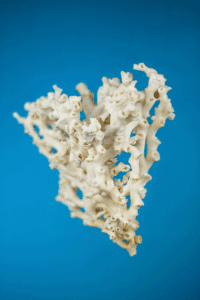
Schembri and one of his collaborators Dr Marija Sciberras saw the nimble spray crab (Percnon gibbesi) all along Maltese shores. This crab is an Atlantic species that entered the Mediterranean through the Strait of Gibraltar in the late 1990s. When they found it in Malta they did not just collect it — they studied it. They found that this shallow water species grows ‘up to a depth of 3m, in other parts of the Mediterranean they have found it down to depths of 10m. It needs a habitat of cobbles or stones, it does not live on bare rock. [In Malta this means] that you find it more towards the north rather than the south, because the coast slopes down to the north and you’ve got many more opportunities for this sort of habitat while the south is mainly cliffs.’ The local shore crab (Pachygrapsus marmoratus) also beats this invader. They saw that the local crabs are much more aggressive than the invader. The nimble spray crab has mostly occupied a niche different from that of local shore crabs.
When we hear the word invader we do not imagine a mostly plant-eating crab sneaking into a new niche while the local omnivorous crab remains reigning supreme; but an invasive species ‘simply means that it spreads very quickly. [To understand] what the effect on the ecosystem is requires many years of study. We have many invaders. Another one, which is even more invasive, is a seaweed — an algae (Caulerpa racemosa) — this is now found everywhere. What does it do? What effect does it have on the local ecosystem? I don’t know, nobody does.’ This is why we need to invest more into scientific research over many years. You cannot figure out how a species is acting
overnight.
Schembri has been studying Malta’s ecology for decades. This long-term knowledge is vital to see slow trends like a warming Mediterranean, climate change, or habitat loss. When I asked him about the changes affecting Malta and Gozo, he replied in a sombre voice ‘I’ve seen a lot of change. In terms of change of habitat, apart from places which have been developed, not much has changed on the open coast. What has changed are the characteristics of the community. For example, previously you used to find large limpets, now you’ll find small limpets. That sort of thing. You haven’t lost a limpet or had a complete change in the ecosystem, but there have been changes nonetheless.’
In some places, especially sheltered areas, things have changed drastically. For his Master’s degree, Schembri collected specimen from Marsaxlokk Bay. This was many years before the development of the Freeport and Delimara power station. When he had a look at it after these developments the species he studied had vanished. ‘The bay has changed and when they started dredging it was even worse because a lot of the sea grasses disappeared. That bay was full of sea grasses before.’ Schembri does not think they will return anytime soon. Loss of sea grasses are even eroding the shore. ‘The sea grass was acting as a buffer to the waves, although it could also be because people have been building breakwaters and things which would change the current patterns which would also cause erosion. These things are complicated and without studying them it is difficult to know and nobody has looked’ — another reason for more researchers and funds being needed.
Marsaxlokk is not the only place. Especially since the 1990s the Maltese coast has been heavily built up, with developments sprouting in many picturesque areas like Armier. Dealing with this development has become a political issue, rather than seeing the consequences from a scientific lens.
Schembri’s view on this change is a bit peculiar to me. When I referred to the changes in Marsaxlokk Bay as ecological devastation he replied saying, ‘I don’t talk about ecological devastation, because what life does is that if the environment changes certain things disappear and other things take their place. Saying it is devastation is a human emotion. Scientifically it’s not what happens.’ Schembri was speaking impersonally from an ecological perspective. I find it hard to see the complete loss of a species or beautiful area because of human progress in this way. If humans are doing the destruction, humans can stop it or reduce the problem.
Ecologists for Tomorrow
Ecologists like Schembri are vital to know the changes taking place around our islands. Without monitoring our land and seas we cannot know how to preserve them so everyone can enjoy them. Nature should be for everyone to enjoy and experience.
Malta’s situation has definitely improved. ‘We have a huge marine protected area going all the way from Qala in Gozo to Portomaso in St Julians to protect all the seagrass meadows there. How are we managing it? We’re not. It’s a line on a map, but it is a first step’ since if anyone wants to develop the area the development’s impact on the ecology needs to be rigorously studied. Unfortunately, no one knows if the sea grasses are doing well or not. The problem is that the area is huge. ‘You don’t try to keep track of every single square metre of sea grass but at least you keep track of some of them. You establish a monitoring programme, the Government is obliged to do it having declared a marine protected area in terms of the Habitats Directive, and some monitoring is being done but there is no management plan.’ The problem is that Malta is an island with limited resources and 10 people abroad would perform one person’s job here. Government needs to give the environment and science more importance.
Schembri’s flexible approach to research is powerful. He makes it work despite the odds, but I do wonder how much more we would know about Malta’s natural wealth if there were many more researchers studying the Maltese environment and if they had better support. There are other researchers apart from Schembri, but they are few. For such a serious man, serious investment in research would surely make him, and future generations, smile.
Find out more:
-
Sciberras, M. & Schembri, P.J. (2008) Biology and interspecific interactions of the alien crab Percnon gibbesi (H. Milne-Edwards, 1853) in the Maltese Islands. Marine Biology Research 4: 321-332.
-
Costantini, F., Taviani, M., Remia, A., Pintus, E., Schembri, P.J. & Abbiati, M. (2010) Deep-water Corallium rubrum (L., 1758) from the Mediterranean Sea: preliminary genetic characterisation. Marine Ecology 31: 261-269.
-
Gravino, F., Dimech, M. & Schembri, P.J. (2010) Feeding habits of the small-spotted catshark Scyliorhinus canicula (l., 1758) in the Central Mediterranean. Rapport du Congrès de la Commission Internationale pour l’Exploration Scientifique de la Mer Méditerranée 39: 538.
-
Evans, J., Borg, J.A. & Schembri P.J. (2013) First record of Herdmania momus (Ascidiacea: Pyuridae) from the central Mediterranean Sea. Marine Biodiversity Records 6: e134; 4pp. [Online. DOI: 10.1017/S1755267213001127]
Green Chemistry for the Environment
Producing Food products, pharmaceuticals, and fine chemicals leads to hazardous waste and poses environmental and health risks. For over 20 years, green chemists have been attempting to transform the chemical industries by designing inherently safer and cleaner processes. Continue reading
The Sky’s Limits
Europe has a dream: a single European sky. By unifying its air traffic it wants to clean up its skies and make them safer. To find out how Dr Sedeer El-Showk interviewed researchers at the University of Malta
Every day around 30,000 aircraft take to Europe’s skies. Choreographing this airborne dance is daunting. At the moment, it is orchestrated by the disparate air traffic management systems of each European country, with control handed over at border crossings. The aeronautics research team at the University of Malta is part of an ambitious EU project to change that by establishing a single European sky, enabling EU air traffic controllers to manage increasing amounts of traffic with greater safety, lower costs, and a reduced environmental impact.
A passion for flight
Ask Prof. Ing. David Zammit-Mangion (Department of Electronic Systems Engineering, UoM) what he loves and he will reply, ‘anything that flies’. He has come a long way since his childhood dreams of flight, when he would build model aeroplanes and scamper over fences to photograph real ones. Now he leads a major research team with an important role in Clean Sky, the EU’s €1.6 billion flagship project which aims to reduce the environmental impact of air transport.
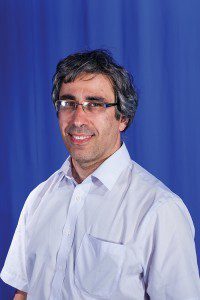
The enthusiasm for flying never left Zammit-Mangion. As an adult, he eventually took to the skies himself, learning to fly during his doctoral research at Cranfield University in the UK, where he designed a cockpit instrument to monitor the take-off performance of aircraft. ‘My dream was to twin my passion with my profession,’ he said. It is a formula that has worked. Zammit-Mangion’s familiarity with commercial operations, safety procedures, and aircraft equipment has given his research an edge by enabling him to quickly estimate the cost and feasibility of different approaches. ‘When it comes to addressing problems, you need to have a very broad understanding of the whole industry,’ he says, and his hands-on industrial experience and hours logged in the cockpit have proven invaluable. Clean Sky is central to meeting the environmental goals embedded in the vision of a unified European sky. Launched in 2008, its goal is to reduce the excess noise and greenhouse gas emissions created by aeroplanes. Air transport is responsible for around 2% of global carbon dioxide (CO2) emissions, but traffic is expected to more than double by 2030. By improving air traffic management (ATM) and aircraft technology, the 600-member Clean Sky project aims to ensure that emissions increase at a slower rate than demand.
Clearing the air
Aeroplanes currently follow flight paths through set air corridors, which can make routes unnecessarily long. They also may have to climb or descend in stages and wait in a holding pattern at their destination. These inefficient practices increase the amount of fuel used, leading to higher costs and greater greenhouse gas emissions. Each kilogram of jet fuel burned releases roughly three kilograms of CO2 into the atmosphere, along with other greenhouse gases like nitrogen oxides. This happens high in the atmosphere, where these gases end up taking part in a variety of physical and chemical processes that cause them to have a greater environmental impact than they would closer to the ground. Given that many airliners burn around 50 kg of fuel per minute, even relatively small optimisations can have a significant impact.
“Each kilogram of jet fuel burned releases three kilograms of CO2 into the atmosphere, along with other greenhouse gases like nitrogen oxides”
Improving air travel routes is not a simple task. It is what engineers call a ‘multi-criterion, multi-parameter problem’. In other words, you have to balance lots of factors, like the type and mass of the aeroplane, weather conditions, route limitations, and air traffic control constraints. At the same time, you need to maximise performance on different objectives such as fuel use, flight time, and environmental impact. Zammit-Mangion describes it as ‘a very complex mathematical problem’. That sort of complexity might sound like a nightmare to most people, but it is just the sort of thing Ing. Kenneth Chircop thrives on. ‘My real love is for engineering mathematics,’ said Chircop. He studied engineering for his degree, but then his passion for mathematical challenges drove him to join the aeronautics research team. ‘At the end of the day, I wanted to do something heavy in mathematics again.’ As their contribution to Clean Sky, the team developed a software package called Green Aircraft Trajectories under ATM Constraints (GATAC) to help optimise flight routes. Instead of just performing a single optimisation, GATAC provides an optimisation framework which aircraft operators can use with their own models. By plugging in models of aircraft and engine performance, emissions levels, noise production, and so on, users can work out optimal air travel trajectories to match their constraints and conditions. The core software developed at UoM incorporates various models from different research partners, but users are also free to plug in their own models. Aircraft manufacturer Airbus uses GATAC with its own proprietary models. ‘It’s great to see that foreign partners look at us as equals,’ said Chircop. ‘They trust us to develop state-of-the-art technology. We have delivered, and they trust us to keep delivering. We’re really proud of that; it’s what makes us tick and want to do more.’
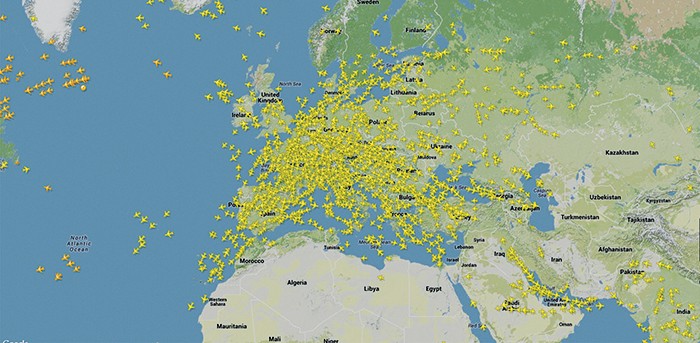

Bringing it home
This work has brought more than just international recognition to Malta; the country will also enjoy practical benefits. Kenneth Chircop is spear-heading Clean Flight — a national research project financed by the Malta Council for Science and Technology’s national research and innovation programme 2011 — to apply the lessons from Clean Sky to Maltese airspace. ‘Our impact on the national scene can be remarkable,’ said Chircop, describing the gains to be made by optimising the arrival and departure routes aeroplanes use at Malta airport. As an island nation, Malta relies heavily on air traffic to connect it to the rest of the world. In 2013, Malta International Airport saw over 30,000 arrivals and departures, up from roughly 26,000 only seven years ago. Despite this, its air traffic systems need an overhaul; while the technology is state-of-the-art, some of the procedures are out of date. For example, aeroplanes arriving and departing from an airport follow standard, published routes, called STARs (Standard Terminal Arrival Route) and SIDs (Standard Instrument Departures) respectively, which can simplify airspace management. ‘The SIDs in Maltese airspace were designed years ago when fuel was relatively cheap, and the impact combustion made on the environment was not given due importance,’ said Chircop, ‘and we don’t even have STARs.’ Updating these procedures presented a clear opportunity to reduce fuel use and greenhouse gas emissions in Maltese airspace. Together with their partner, Maltese aeronautics consultancy company QuAero Ltd, Chircop, Zammit-Mangion, and the rest of the team analysed the flight paths taken by aircraft in Maltese airspace and discovered that they were scattered and inefficient. They developed a tool to design and analyse the best arrival and departure routes for aeroplanes, which they used to calculate revised routes for Malta’s airport. Based on fuel savings estimates for the Boeing 737 and Airbus A320, the two most common aircraft in Maltese airspace, the new routes could save 465 tonnes of fuel for departing aircraft and 200 tonnes for arrivals every year. The fuel reductions mean less money spent and lower CO2 emissions in Maltese airspace. Not only does that directly benefit Malta’s environment, but it also offers indirect benefits by reducing the pressure on Malta’s carbon emission caps. In addition to improving the course followed by flights, the team has helped improve climbs and descents. Planes can approach the airport in many different ways: for example, a smooth, continuous descent, a series of steps interrupted by level flight, or a close approach at full altitude followed by a quick descent. Determining which approach is optimal is a dynamic problem that has to factor in the weight of aeroplane and its cargo, weather conditions, operational constraints, air traffic and so forth. Current optimisation methods try to balance flight time and fuel use, but do not take the other factors into account. The Clean Flight team developed a new approach using computer algorithms which can improve the efficiency of climbs and descents in around 10 minutes on a single computer. ‘So 15 minutes before departure, for example, an air traffic controller can calculate the optimal route for the flight at the current conditions,’ said Chircop. Altogether, this work could save 1,500 tonnes of fuel every year.
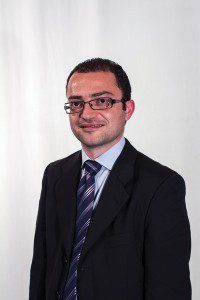
Upwards and onwards
The sky is the limit for this aeronautics team. As Clean Sky winds to a close, the EU is preparing to launch Clean Sky 2, and the UoM team will probably continue to play a significant role in the initiative. On the national front, the optimisation system developed in the Clean Flight project will be tested with actual flight trials over the coming months – a major step forward in a field where such tests are incredibly expensive and safety is always a paramount concern. According to Chircop, it is an indication that the potential benefits are large. ‘We’re pushing to get this technology into the field so we can see it making actual gains, instead of simply on paper,” he said. Meanwhile, the GATAC software package is already being used by key industrial players, according to Zammit-Mangion. Looking forward, it clearly has a scope beyond Clean Sky, and may even come to be used by other industries like maritime shipping, which faces similar problems. The team is also working on a project to test unmanned aerial vehicles (UAV) flying with commercial aircraft in an air traffic control environment. Although the UAV tech was developed in Italy, the Maltese team will test its operational aspects. If successful, the project could open the door to the integration of UAVs into the wider aviation community. The aeronautics team has put Malta on the map when it comes to aviation research, a major accomplishment for a nation with no significant track record in the field until ten years ago. ‘We’re well-established and recognised in European and global research circles,’ said Zammit-Mangion, describing the team’s success. With the network of partners they have built up and the quality of the team’s research, the future is looking up.
[ct_divider]
Dr Sedeer El-Showk is a freelance science writer. He blogs at Inspiring Science and for Nature’s Scitable network.
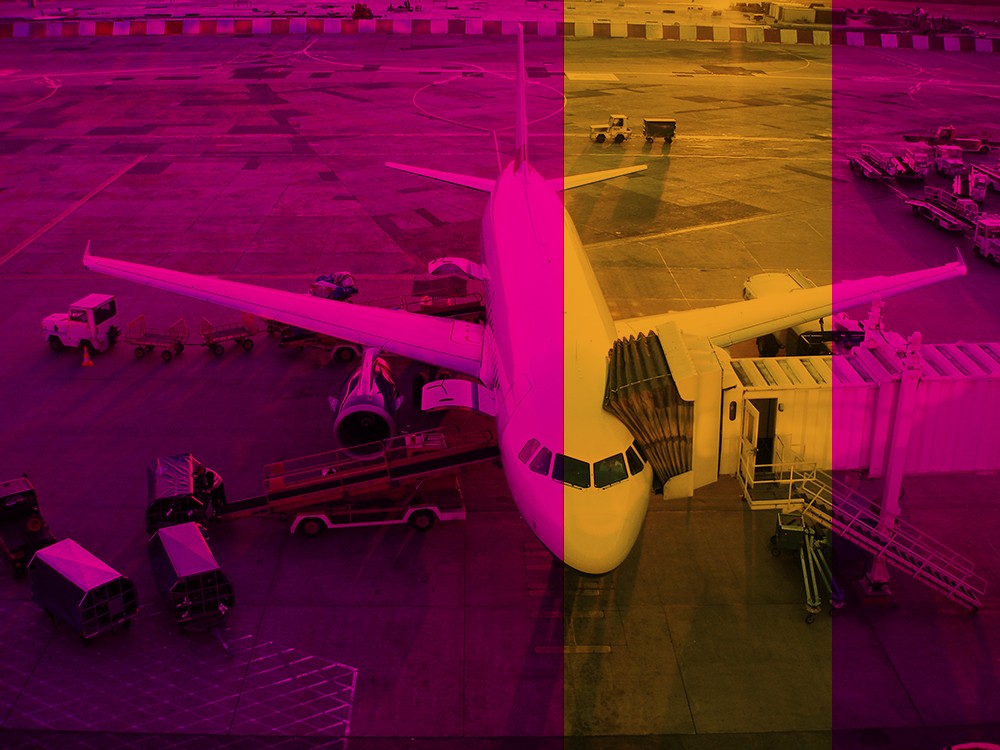
Documentary on Maltese researchers by Science in the City
Shipping’s Black Cloud
Over summer Dr Edward Duca visited the beautiful Island of Gozo, meeting Prof. Ray Ellul and his team based in Xewkija and the Giordan Lighthouse. Gozo is a tourist hotspot because of its beautiful landscapes, churches, and natural beauty. These same reasons attracted Ellul to obtain baseline readings of air pollutants; human effects should be minimal. Their equipment told them a different story.
They’re very big, anything from 10,000 tonnes to 100,000 tonnes,’ atmospheric physicist Prof. Ray Ellul is telling me about the 30,000 large ships his team observed passing between Malta and Sicily over a year. This shipping superhighway sees one third of the world’s traffic pass by carrying goods from Asia to Europe and back.
The problem could be massive. ‘A typical 50,000 tonner will have an engine equivalent to 85 MW,’ Malta’s two electricity plants churn out nearly 600 MW. You only need a few of these to rival the Islands’ power stations.
Ellul continues, ‘this is far far worse. We are right in the middle of it and with winds from the northwest we get the benefit of everything.’ Northwest winds blow 70% of the time over Malta and Gozo, which means that around two thirds of the time the pollutants streaming out of these ships are travelling over Malta. Even in Gozo, where traffic is less intense, air quality is being affected.
“Ships currently use heavy fuel oil with 3.5% sulfur; this needs to go down to at least 0.5%. The problem is that it doubles cost”
Malta is dependent on shipping. Malta’s Flag has the largest registered tonnage of ships in Europe; shipping brings in millions for Malta. We cannot afford to divert 30,000 ships to another sea. Yet Malta is part of the EU and our politicians could ‘go to Brussels with the data and say we need to ensure that shipping switches to cleaner fuels when passing through the Mediterranean.’ Politicians would also need to go to the Arab League to strike a deal with North Africa. Ships currently use heavy fuel oil with 3.5% sulfur; this needs to go down to at least 0.5%. The problem is that it doubles the costs. Malta’s battle at home and abroad won’t be easy, but the Baltic Sea has already taken these measures.
German Dreams
The research station in Gozo is a full-fledged Global Atmospheric Watch station with a team of five behind it. Now it can monitor a whole swathe of pollutants but its beginning was much more humble, built on the efforts of Ellul, who was drawn into studying the atmosphere in the 80s when he shifted his career from chemistry to physics.
In the early 90s the late rector, Rev. Prof. Peter Serracino Inglott, wanted the University to start building some form of research projects. ‘At that time, we knew absolutely nothing about what was wrong with Maltese air and Mediterranean pollution,’ explained Ellul. Building a fully fledged monitoring station seemed to be the key, so Ellul sent ‘handwritten letters with postage stamps’ to the Max Planck Institute in Mainz. Nobel prize winner Paul J. Crutzen wrote back inviting him to spend a year’s sabbatical in Germany, but their help didn’t stop there. ‘He helped us set-up the first measuring station, [to analyse the pollutants] ozone, then sulphur dioxide, then carbon monoxide. That’s the system we had in 1996 — […] 2 or 3 instruments.’
They lived off German generosity until 2008 when Malta started tapping into EU money. After some ERDF money and an Italy-Malta project on Etna called VAMOS SEGURO (see Etna, THINK issue 06, pg. 40), Ellul now manages a team of five. In homage to his early German supporters he has structured the research team around a Max Planck model — ‘one of the best systems in the World for science’.
Paradise Lost?
Getting data about ships is not easy. ‘It is very sensitive information and there is a lot of secrecy behind it,’ explains Ing. Francelle Azzopardi, a Ph.D. student in Ellul’s team. It is also very expensive. Lloyd’s is the World’s ship registry that tracks all ships, knowing their size, location, engine type, fuel used — basically a researcher’s dream. However, they charge tens of thousands. Ellul took the decision that they gather all the data themselves.
After 2004, all international ships above 300 gross tons need to have a tracking device. Automatically, these ships are traced around the world and anyone can have a peek on www.marinetraffic.com (just check the traffic around Malta). Every half hour the team’s administrator Miriam Azzopardi saves the data then integrates it into the Gozitan database. This answers the questions: where was this ship? which ship was it? how big is it? Easy.
“Ship emission expert James Corbett calculates that worldwide around around 60,000 people die every year due to ship emissions”
If only! The problem is that the researchers also need to know fuel type, engine size, pollution reduction measures, and so on. Then they would know which ship is where, how many pollutants are being emitted, and how many are reaching Malta and Gozo. To get over this hurdle, they contacted Transport Malta (more than once) to ask for the information they needed. ‘About 50% of the ships passing there [by us or Suez are] Malta registered,’ explained Ellul. With this information in hand they could put two and two together. They could create a model for ship emissions close to the Islands and use the model to get the bigger picture.
Enter their final problem: how do you model it? Enter the Finns. Ing. Francelle Azzopardi travelled to the Finnish Meterological Institute. They had already modeled the Baltic Sea, now they wanted access to the Maltese data, in return the Maltese team wanted access to their model called STEAM.
STEAM is a very advanced model. It gathers all the ships’ properties like engine power, fuel type, and ship size. This is combined with its operating environment including speed, friction, wave action, and so on. STEAM then spits out where the team should be seeing the highest pollution indicators. Malta was surrounded.
Apart from the model, the team have seen a clear link between ships and pollution. At the Giordan lighthouse they can measure a whole host of pollutants sulphur dioxide, various nitrogen oxides, particulate matter, black and brown carbon levels, ozone, radioactivity levels, heavy metals, Persistent Organic Pollutants (POPs) and more. When the wind blows from the Northwest, they regularly show peaks of sulfur dioxide, nitrogen oxides, carbon dioxide, carbon monoxide, hydrocarbons which are all indicative of fossil fuel burning either from ships or Sicilian industry. They also picked up relatively high levels of heavy metals especially Vanadium, a heavy metal pollutant. Such metals are more common in heavy fuel oil used by ships.
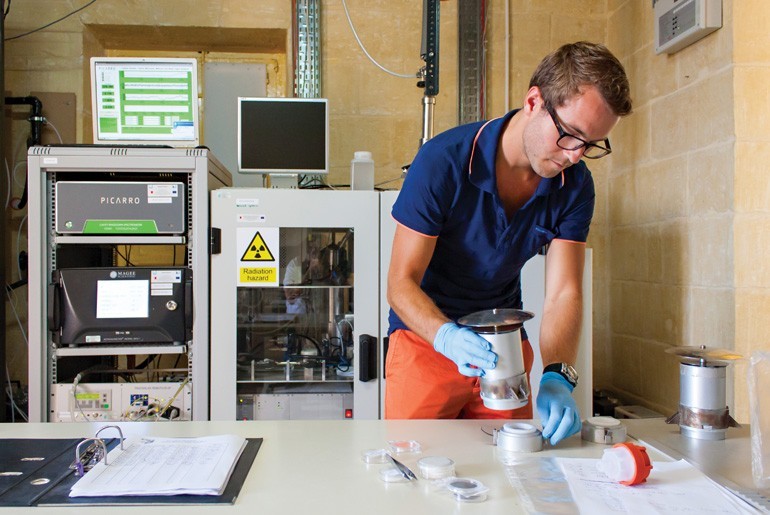
Alexander Smyth is the team’s research officer who spends three months in Paris every year analysing filters that capture pollutants from the atmosphere. Two different filter types are placed in the Giordan Lighthouse. One filter for particles smaller than 2.5 micrometers and another filter for particles around 2 to 10 microns. ‘With the 2.5 filter we can see anthropogenic emissions or ship emissions because they tend to be the smaller particles. The filters are exposed for three to four days, and then they need to be stored in the fridge. Afterwards, I take them to Paris and conduct an array of analyses,’ continued Alexander. The most worrying pollutant he saw was Vanadium.
Vanadium is a toxic metal. When inhaled, ‘it can penetrate to the alveoli of the lungs and cause cancer, a worst case scenario,’ outlined Alexander. It can also cause respiratory and developmental problems — none are good news. The only good news is that ‘they are in very small amounts’. Quantity is very important for toxicity, and they are seeing nanograms per cubic metre, a couple of orders of magnitude more are needed to cause serious problems. No huge alarm bells need to be raised, although Vanadium does stick around in bones and these effects still need more studies.
Vanadium seems to be coming from both Malta and shipping traffic. ‘The highest peaks of vanadium are from the south [of Malta, but the largest number of times I detected came] from the northwest, [from ships],’ said Smyth. ‘There is a larger influence from ships compared to local pollution at the Giordan lighthouse.’
Vanadium is not the only pollutant that could be affecting the health of Maltese citizens. Smyth also saw lots of different Persistent Organic Pollutants (POPs). At low concentrations these compounds can affect immunity leading to more disease, at higher concentrations they can lead to cancer. The local researchers still need to figure out their effect on Malta’s health. Francelle Azzopardi also saw peaks of sulfur dioxide and nitrogen oxides. No surprise here as shipping is thought to cause up to a third of the World’s nitrogen oxides and a tenth of the sulfur dioxide pollution.
Inhaling high levels of sulfur dioxide leads to many problems. It is associated with respiratory disease, preterm births, and at very high levels, death. It can affect plants and other animals. Nitrogen oxides also cause respiratory disease, but can also cause headaches, reduce appetite, and worsen heart disease leading to death. These are pollutants that we want to keep as low as possible.
Ship emission expert James Corbett (University of Delaware) calculates that worldwide around 60,000 people die every year due to ship emissions. Most deaths come from the coastlines of Europe, East Asia, and South Asia. Shipping causes around 4% of climate change emissions. This is set to double by 2050. In major ports, shipping can be the main cause of air pollution on land.
Another unexpected pollutant was ozone, normally formed when oxygen reacts with light. Yet the Giordan lighthouse was not the first to start measuring this gas. It all started with the Jesuits, scholarly catholic monks.
Monks at work
A lot of time is needed to see changes in our atmosphere. Researchers need to gather data over years. To speed up the process, Ellul was hunting around Malta and Gozo for ancient meteorological data about the Islands’ past atmosphere.
He was tipped off that there were still some records at a seminary in Gozo. ‘We expected to find just meteorological data and instead we also found ozone data as well. It was a complete surprise and a stroke of very good luck. We were able to find out what happened to ozone levels in the Mediterranean over the last hundred years.’
Jesuit monks meticulously measured ozone levels from 1884 to 1900. They analysed them seeing that the concentration of ozone was a mere 8 to 12 parts per billion by volume, ppbv. Ellul compared these to a 10-year study he conducted from 1997 to 2006. ‘We measure around 50ppb on average throughout the year,’ which is nearly 5 times more over a mere 100 years.
The situation is quite bad for Malta. In the past, the minimum was in summer and the maximum in winter and spring. Now, this has reversed with spring and summer having the highest ozone levels because of the reactions between hydrocarbons and nitrogen oxides. These come from cars, industry, and ships.
Over the Eastern Mediterranean ozone levels have gradually decreased. Over Malta, in the Central Mediterranean, they remained the same. Ellul thinks this could be because of an anticyclone over the central Mediterranean bringing pollutants from Europe over Malta and Gozo. The levels of ozone in Malta and Gozo are the highest in Europe, and it could be mostly Europe’s fault. Our excessive traffic doesn’t help.
Ozone can be quite a mean pollutant. While stratospheric ozone blocks out harmful UV rays, low-level ozone can directly damage our health or react with other pollutants to create toxic smog. It’s been known to start harming humans at levels greater than 50 ppbv. It inflames airways causing difficulty breathing, coughing and great discomfort. Some research has linked it to heart attacks — a pollutant not to be taken lightly.
Over those 10 years Ellul and his team saw 20 episodes in summer where ozone levels exceeded 90 ppbv. Some were during the night, unlikely to be of local origin but due to transport phenomena in the central Mediterranean and shipping. Ellul does nod towards the possibility of air recirculation from Malta. The atmosphere is a complicated creature.
Plants also suffer from ozone. Above 40 ppbv yield from fields decreases. Gozo is definitely being affected; we could be producing more.
The devil is in the details
Ellul and his team have found a potentially big contributor to the Islands’ pollution. This would be over and above our obvious traffic problem. Yet Ellul admits that ‘there is no particular trend, it’s too short a time span. What it tells us is that what we think is a clean atmosphere is not really a clean atmosphere at all. The levels are significant.’ Azzopardi honestly says ‘I can [only] give you an idea of what is happening’.
The team needs to study the problem for longer. It needs some statistics. Clearly they see a link between ships passing by Malta and peaks in pollution levels, but the Islands need to know if shipping pollution levels beat industry, traffic, or Saharan dust. What is ships’ contribution to Malta’s health problems?
When the team knows the extent of pollution, they can see whether they go above European standards. Ozone already does, and likely to be due to pollution from the European continent. If they can extend it to a whole host of other pollutants that skyrocket above European standards due to ship traffic, then ‘our politicians,’ says Ellul, can go to Brussels to enforce new legislation. That could control Mediterranean shipping traffic to clean up our air. At least it would solve one significant problem that Malta cannot solve on its own.
The main problem is economic. A ship can be made greener by reducing its sulfur fuel content. Low sulfur fuels are double the price of the bunker fuel they currently use. New legislation would need enforcement, which is costly. Ships could also be upgraded, again at a price. Passing these laws is not going to be easy.
Ships have been a pollution black hole for a while. The fuels ships burn contains 3,000 times more sulfur than cars are allowed to burn. Quite unfair. Going back to Corbett’s figures estimating European deaths at 27,000, the current rise in shipping pollution could end up killing hundreds of thousands if not millions before new legislation is enforced. Now that would be truly unfair.
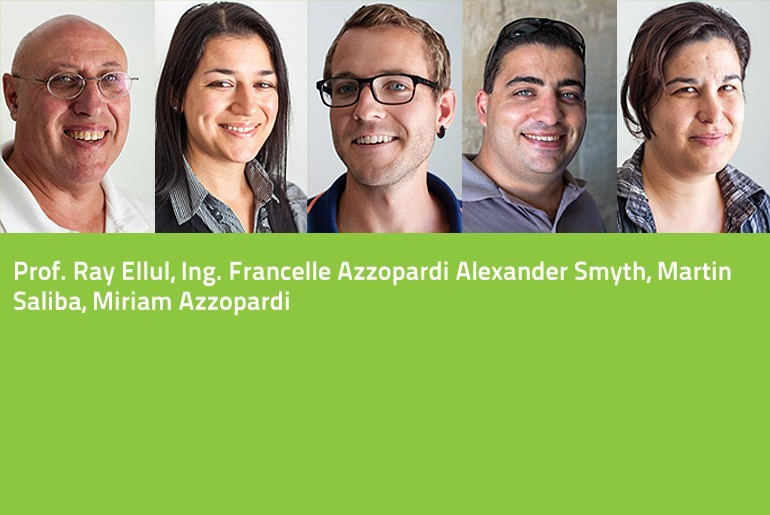
Future-Safe Malta
Words by Prof. Saviour Formosa
“Extreme weather leaves Mediterranean countries picking up the pieces. Egypt and Lebanon were the hardest hit with over 1.2 million people displaced overnight. Malta didn’t fare much better. The authorities have reported over 2,300 dead or missing, thousand injured and 74,000 persons displaced. Power cuts have been reported all over the island after Turbine Two tripped at the Delimara Power Station. Enemalta have not replied. The islands have taken a major blow to their infrastructure. Debris has been reported 1 km away from the coasts. The AFM and emergency responses were immediately dispatched and are starting to clear arterial roads. Insurance companies are still counting the costs. Valletta, Floriana and parts of Isla were protected from the storm surge by centuries-old Knight’s fortifications. The following localities have been affected: Birgu, Bormia, Kalkara, Marsa, Gzira, Msida, Pietà, San Giljan, Sliema, Ta’Xbiex, Xghajra, Birzebbuga, Marsascala, Marsaxlokk, Xlendi and Marsalforn. “
The above cutout could become reality if a Category 3 storm lashes Malta with 178 to 208 km per hour winds. The chances are minimal but too probable to ignore, since in 1995 a similar storm formed close to the Maltese Islands followed by others in 1996, 2006, and 2011. Below are two scenarios that compare Malta as it currently stands against an island with a solid disaster management plan.
[ SCENARIO 1 – AN UNPREPARED ISLAND]
The emergency forces have been inundated with calls for help and have few plans to operate a workable rescue effort. Key personnel were lost at home or while rushing to the scene, since the infrastructure has been knocked out, paralysing the island. Power surges or power cuts have caused fires all over the Islands creating an apocalyptic scenario. With the storm still raging, the lack of a back-end ICT network has rendered communication near impossible.
[ SCENARIO 2 – THE IDEAL SCENARIO]
A fleet of small aerial drones is monitoring the disaster. The authorities are using them to identify the hardest hit areas and map out corridors that allow access on the ground. Emergency vehicles are being deployed safely. Services will be redeployed after safety assessments and clearing of the main infrastructure. Paramedics, NGO rescue teams, and armed forces help move people to safer grounds and carry out rescue operations. Community buildings on higher ground are converted into temporary shelters. In turn, decision-makers are kept informed using an Emergency Room for effective relief.Continue reading
Can jetties replace rocky shores?
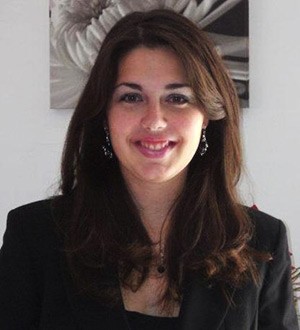
The marine environment needs to be conserved because all enjoy it in summer for leisure and fishermen depend on it for their livelihood. Our rocky shores also hold a unique ecology and it must be studied as a whole to understand how a seemingly insignificant crab or limpet can affect other species we might consider more important.
Our natural environment can be likened to a puzzle having thousands of pieces. If one piece is removed or changed, it will result in a different or incomplete picture. Jetties are artificial structures, in an otherwise natural matrix of rocky shore habitat, which add a new piece to the puzzle. They are built at right angles to the shore and are much smoother than natural rock. These differences are expected to change the environment and species living there. Leanne Bonnici (supervised by Dr Joseph A. Borg and Prof. Patrick J. Schembri) studied these jetties to understand how they would affect the big picture.
Bonnici studied three sites on the northeastern coast of the Maltese Islands (Little Armier, White Tower Bay and Għajn Żejtuna). The organisms on jetties in these areas were sampled from the mediolittoral zone — that part of the shore that is regularly submerged and exposed to the air. Sampling showed that the most abundant algae were low-growing green algae (Cladophoropsis sp.), and a red alga (Jania rubens). The algae serve as a source of food and shelter to other species.
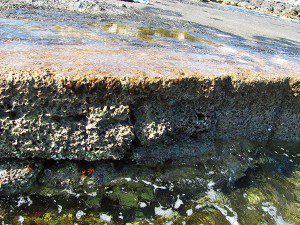
The most common animals were crustaceans, molluscs, and polychaetes. Polychaetes are worms that possess lots of hair-like structures (chaetae). The most common polychaetes were small voracious predators a few millimetres in length. The diverse crustaceans included small cone shaped barnacles (Chthamalus spp.), which spend most of their life attached to rocks. Other abundant crustaceans included minute shrimp-like swimming animals known as amphipods (Hyale sp. and Ampithoe sp.) that are typically found amidst algae. The molluscs recorded included different species of limpets Patella spp., as well as the chiton Acanthochitona sp.; all of these are usually found attached to the substratum, although they do move to graze on algae.
Bonnici found that jetties share some species with rocky shores; however, jetties always had a lower diversity and fewer numbers of individuals living on them. Therefore one can conclude that jetties cannot replace natural rocky shores.
Keeping to the puzzle analogy, if we know how modifying a ‘piece’ of the environment changes the other pieces, it will help maintain the whole picture. This study will help better manage how jetties affect organisms and make the most out of these artificial structures.
This research is part of an M.Sc. in Biology at the Faculty of Science. It was partly funded by the Strategic Educational Pathways Scholarship (Malta), which is part-financed by the European Union – European Social Fund (ESF) under Operational Programme II – Cohesion Policy 2007-2013, “Empowering People for More Jobs and a Better Quality Of Life”.

